-
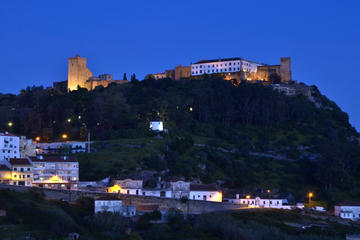 Palmela Castle (Castelo de Palmela)
Palmela Castle (Castelo de Palmela) Palmela Castle sits high up on the Serra de Arrabida hills, giving it a vantage point that has been strategic and valuable since the Moors first occupied it in the 8th century. Portuguese kings fought to acquire it in 1147, and it was later converted into a mona
Palmela Castle (Castelo de Palmela)
Palmela Castle (Castelo de Palmela) Palmela Castle sits high up on the Serra de Arrabida hills, giving it a vantage point that has been strategic and valuable since the Moors first occupied it in the 8th century. Portuguese kings fought to acquire it in 1147, and it was later converted into a mona
-
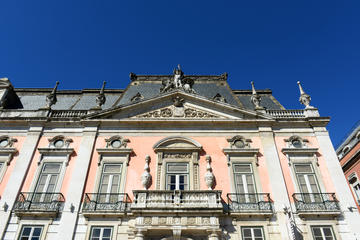 Palacio Foz
Palacio Foz The Palacio Foz is an ornate palace built in the 18th century that today houses the Lisbon tourism office and frequently holds local events. Built in the Baroque style, it has since been restored by Italian architect Francesco Saverio Fabri — giving it a more Italian feel. Originally
Palacio Foz
Palacio Foz The Palacio Foz is an ornate palace built in the 18th century that today houses the Lisbon tourism office and frequently holds local events. Built in the Baroque style, it has since been restored by Italian architect Francesco Saverio Fabri — giving it a more Italian feel. Originally
-
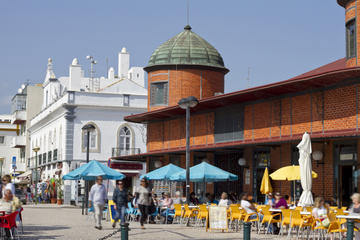 Olhão
Olhão The Algarve’s biggest fishing port is a lively place to be in the morning, when a busy fish market takes over the seafront, and fittingly, Olhao is full of quality fish and seafood restaurants, as well as hosting a renowned Shellfish Festival each August. The small town is more than jus
Olhão
Olhão The Algarve’s biggest fishing port is a lively place to be in the morning, when a busy fish market takes over the seafront, and fittingly, Olhao is full of quality fish and seafood restaurants, as well as hosting a renowned Shellfish Festival each August. The small town is more than jus
-
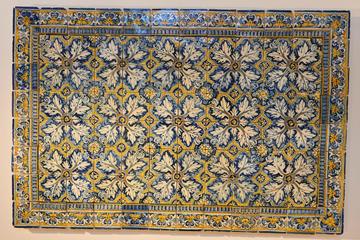 National Tile Museum
National Tile Museum One of the defining characteristics of Portugal is its many masterful, colorful tiles (‘azulejo.’) Intricate tile work can be found all over the country in homes and churches, in streets, on walls — in all patterns, shapes, sizes, and colors. Some of the more delicate ceramic
National Tile Museum
National Tile Museum One of the defining characteristics of Portugal is its many masterful, colorful tiles (‘azulejo.’) Intricate tile work can be found all over the country in homes and churches, in streets, on walls — in all patterns, shapes, sizes, and colors. Some of the more delicate ceramic
-
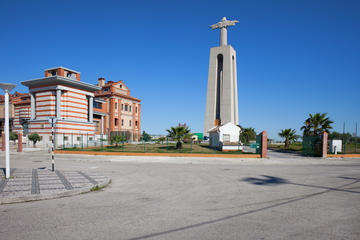 National Sanctuary of Christ the King
National Sanctuary of Christ the King This tall monument stands on a cliff overlooking Lisbon and offers one of the best views of the city and its surrounds. The figure of Christ was built in honor of God’s protection of Portugal in World War II and constructed in cement over a 10-year timeframe b
National Sanctuary of Christ the King
National Sanctuary of Christ the King This tall monument stands on a cliff overlooking Lisbon and offers one of the best views of the city and its surrounds. The figure of Christ was built in honor of God’s protection of Portugal in World War II and constructed in cement over a 10-year timeframe b
-
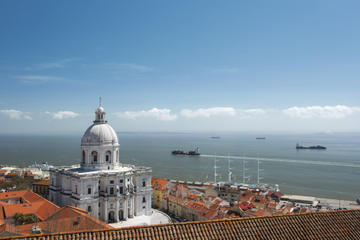 National Pantheon of Santa Engracia
National Pantheon of Santa Engracia The burial place of the great and good of Portugal, the gleaming white National Pantheon has its roots in the 17th century but was only finally completed in 1966. Constructed to a design by Lisbon’s Baroque master-craftsman João Antunes, it is a mini-me of St Pe
National Pantheon of Santa Engracia
National Pantheon of Santa Engracia The burial place of the great and good of Portugal, the gleaming white National Pantheon has its roots in the 17th century but was only finally completed in 1966. Constructed to a design by Lisbon’s Baroque master-craftsman João Antunes, it is a mini-me of St Pe
-
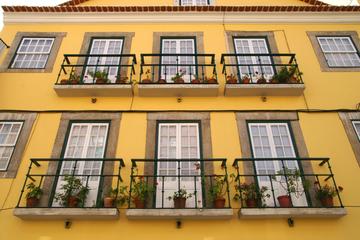 Museum of Amalia Rodrigues (Fundacao Amalia Rodrigues Casa Museu)
Museum of Amalia Rodrigues (Fundacao Amalia Rodrigues Casa Museu) Amália Rodrigues is one of Portugal’s most beloved artists and public figures, an icon of fado music. Following her death in 1999, her three story former residence was turned into a museum that has become a testament to her legacy.
Museum of Amalia Rodrigues (Fundacao Amalia Rodrigues Casa Museu)
Museum of Amalia Rodrigues (Fundacao Amalia Rodrigues Casa Museu) Amália Rodrigues is one of Portugal’s most beloved artists and public figures, an icon of fado music. Following her death in 1999, her three story former residence was turned into a museum that has become a testament to her legacy.
-
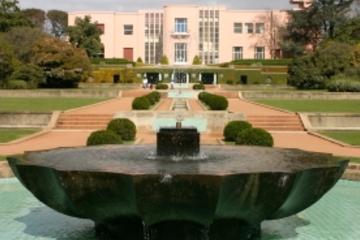 Museu de Arte Contemporanea (Museum of Contemporary Art)
Museu de Arte Contemporanea (Museum of Contemporary Art) Much of Porto’s culture is rooted in old traditions, but the Museum of Contemporary Art (or Museu de Arte Contemporanea) is a successful entry into contemporary cultural relevance. Found at the Casa de Serralves, a cultural center in a magni
Museu de Arte Contemporanea (Museum of Contemporary Art)
Museu de Arte Contemporanea (Museum of Contemporary Art) Much of Porto’s culture is rooted in old traditions, but the Museum of Contemporary Art (or Museu de Arte Contemporanea) is a successful entry into contemporary cultural relevance. Found at the Casa de Serralves, a cultural center in a magni
-
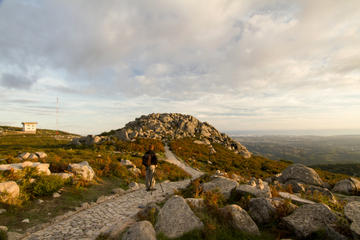 Mt Fóia
Mt Fóia Looming 902 meters over the colorful spa town of Caldas de Monchique below, Mt Fóia is the Algarve’s highest peak and makes a scenic day trip from nearby Portimão. It’s the spellbinding views that make Fóia so popular, spanning the rugged Serra de Monchique mountain range, the Alvor River,
Mt Fóia
Mt Fóia Looming 902 meters over the colorful spa town of Caldas de Monchique below, Mt Fóia is the Algarve’s highest peak and makes a scenic day trip from nearby Portimão. It’s the spellbinding views that make Fóia so popular, spanning the rugged Serra de Monchique mountain range, the Alvor River,
-
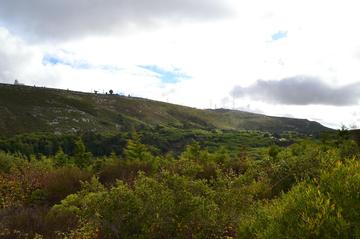 Montejunto Mountain
Montejunto Mountain Standing at 666 meters (2,185 feet), the rocky peak of Montejunto sits north of Lisbon and is one of Portugal’s 30 protected landscapes; as the highest point on the horizon, it has unsurpassed views from the Salvé Rainha Viewpoint. When the weather permits, it is possible to se
Montejunto Mountain
Montejunto Mountain Standing at 666 meters (2,185 feet), the rocky peak of Montejunto sits north of Lisbon and is one of Portugal’s 30 protected landscapes; as the highest point on the horizon, it has unsurpassed views from the Salvé Rainha Viewpoint. When the weather permits, it is possible to se
-
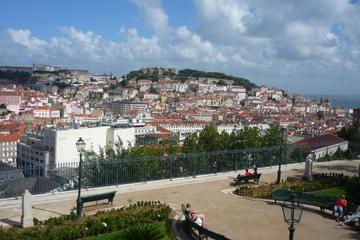 Miradouro São Pedro de Alcantara
Miradouro São Pedro de Alcantara With views across to hilltop St George’s Castle (Castello de São Jorge) to Baixa and the gleaming waters of the River Tagus, the viewpoint at São Pedro de Alcantara is an exotic two-tier balustraded garden in Lisbon’s Bairro Alto. Created in the 19th century, the u
Miradouro São Pedro de Alcantara
Miradouro São Pedro de Alcantara With views across to hilltop St George’s Castle (Castello de São Jorge) to Baixa and the gleaming waters of the River Tagus, the viewpoint at São Pedro de Alcantara is an exotic two-tier balustraded garden in Lisbon’s Bairro Alto. Created in the 19th century, the u
-
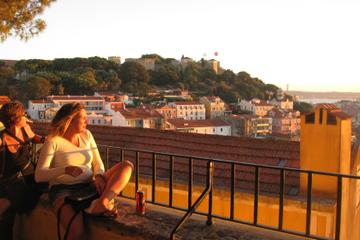 Miradouro da Graça
Miradouro da Graça Standing high above central Lisbon on the hill of Santo André, the viewpoint at Graça is an elegant terrace located next to an ancient church in one of the city’s oldest and most intriguing districts. It has far-reaching vistas across to St George’s Castle (Castello de São Jorge
Miradouro da Graça
Miradouro da Graça Standing high above central Lisbon on the hill of Santo André, the viewpoint at Graça is an elegant terrace located next to an ancient church in one of the city’s oldest and most intriguing districts. It has far-reaching vistas across to St George’s Castle (Castello de São Jorge
-
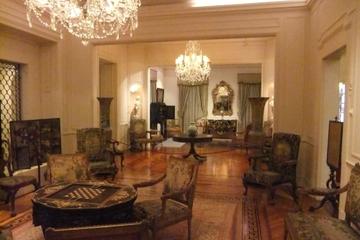 Medeiros e Almeida Museum
Medeiros e Almeida Museum This historic home is a 25-room private collection of art ranging from the 17th to 20th centuries. With Chinese porcelain, European painting and sculpture, tapestries, and a dining set that once belonged to Napoleon Bonaparte, there is an abundance of fine and decorative
Medeiros e Almeida Museum
Medeiros e Almeida Museum This historic home is a 25-room private collection of art ranging from the 17th to 20th centuries. With Chinese porcelain, European painting and sculpture, tapestries, and a dining set that once belonged to Napoleon Bonaparte, there is an abundance of fine and decorative
-
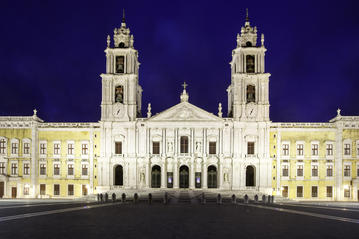 Mafra National Palace
Mafra National Palace The Mafra National Palace, which once served as a Franciscan monastery, was one of the largest buildings in Europe when it was built in the 18th century. In 1717, King João V built the palace to celebrate the birth of his daughter. Its Baroque and neoclassical architecture dr
Mafra National Palace
Mafra National Palace The Mafra National Palace, which once served as a Franciscan monastery, was one of the largest buildings in Europe when it was built in the 18th century. In 1717, King João V built the palace to celebrate the birth of his daughter. Its Baroque and neoclassical architecture dr
-
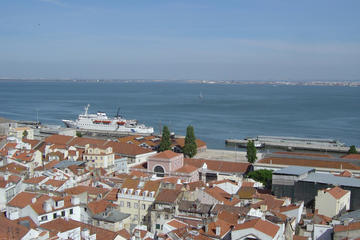 Lisbon Cruise Port
Lisbon Cruise Port Lisbon is the westernmost capital city in Europe and the hub of Portugal, situated on the Atlantic Ocean. It is a lively, fun city with beautiful tiled buildings and great shopping. The nightlife and music scene are excellent, and there is a real feeling of creativity in the cit
Lisbon Cruise Port
Lisbon Cruise Port Lisbon is the westernmost capital city in Europe and the hub of Portugal, situated on the Atlantic Ocean. It is a lively, fun city with beautiful tiled buildings and great shopping. The nightlife and music scene are excellent, and there is a real feeling of creativity in the cit
-
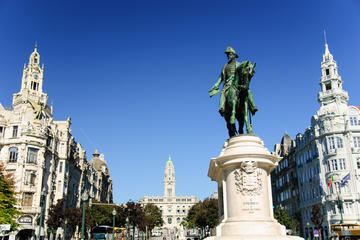 Liberdade Square
Liberdade Square Lying at the southern end of Porto’s majestic Avenida dos Aliados, Liberdade Square (Praça da Liberdade) started its life in the late 18th century when the city began to expand beyond its medieval walls, which are now long gone. The geographical and social importance of the square
Liberdade Square
Liberdade Square Lying at the southern end of Porto’s majestic Avenida dos Aliados, Liberdade Square (Praça da Liberdade) started its life in the late 18th century when the city began to expand beyond its medieval walls, which are now long gone. The geographical and social importance of the square
-
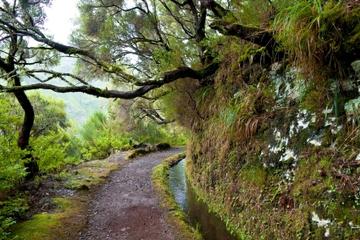 Laurisilva Rainforests of Madeira
Laurisilva Rainforests of Madeira The mountainous interiors of these steeply pitched volcanic islands are draped with a unique and lush ecosystem, the Laurisilva Rainforests of Madeira. Named for its flowering laurels, these forests are marbled with waterfalls and home to hundreds of endemic speci
Laurisilva Rainforests of Madeira
Laurisilva Rainforests of Madeira The mountainous interiors of these steeply pitched volcanic islands are draped with a unique and lush ecosystem, the Laurisilva Rainforests of Madeira. Named for its flowering laurels, these forests are marbled with waterfalls and home to hundreds of endemic speci
-
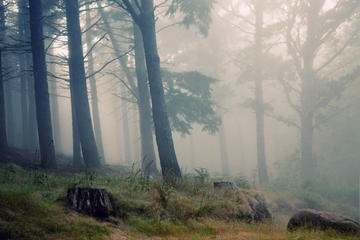 Laurel Forest (Laurisilva)
Laurel Forest (Laurisilva) One of the many reasons why visitors come to Europe is to steep themselves in history. But the Portuguese island of Madeira is home to a piece of history that goes beyond the ruins of Rome and the battlefields of France – the Laurel Forest. Vegetation such as the kind fo
Laurel Forest (Laurisilva)
Laurel Forest (Laurisilva) One of the many reasons why visitors come to Europe is to steep themselves in history. But the Portuguese island of Madeira is home to a piece of history that goes beyond the ruins of Rome and the battlefields of France – the Laurel Forest. Vegetation such as the kind fo
-
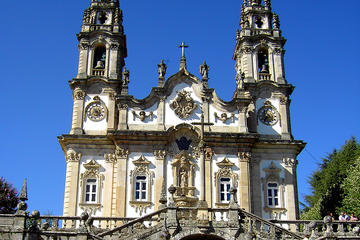 Lamego
Lamego In a fertile valley in the Douro River region’s Port wine area sits the little town of Lamego. It’s famous for its proximity to one of the most important shrines in all of Portugal, the church of Nossa Senhora dos Remedios, which has been challenging pilgrims with its 600-step staircase sin
Lamego
Lamego In a fertile valley in the Douro River region’s Port wine area sits the little town of Lamego. It’s famous for its proximity to one of the most important shrines in all of Portugal, the church of Nossa Senhora dos Remedios, which has been challenging pilgrims with its 600-step staircase sin
-
 Labirinto Lisboa
Labirinto Lisboa The Labirinto Lisboa is the only permanent haunted attraction in Portugal, combining live scare actors and special effects across 17 different environments. In just 15 minutes, explore a winding labyrinth that attempts to bring Portugal’s darkest historical characters and legends
Labirinto Lisboa
Labirinto Lisboa The Labirinto Lisboa is the only permanent haunted attraction in Portugal, combining live scare actors and special effects across 17 different environments. In just 15 minutes, explore a winding labyrinth that attempts to bring Portugal’s darkest historical characters and legends
Total
723 -travel
FirstPage PreviousPage NextPage LastPage CurrentPage:
2/37 20-travel/Page GoTo Page:
 Palmela Castle (Castelo de Palmela)
Palmela Castle (Castelo de Palmela) Palmela Castle sits high up on the Serra de Arrabida hills, giving it a vantage point that has been strategic and valuable since the Moors first occupied it in the 8th century. Portuguese kings fought to acquire it in 1147, and it was later converted into a mona
Palmela Castle (Castelo de Palmela)
Palmela Castle (Castelo de Palmela) Palmela Castle sits high up on the Serra de Arrabida hills, giving it a vantage point that has been strategic and valuable since the Moors first occupied it in the 8th century. Portuguese kings fought to acquire it in 1147, and it was later converted into a mona
 Palacio Foz
Palacio Foz The Palacio Foz is an ornate palace built in the 18th century that today houses the Lisbon tourism office and frequently holds local events. Built in the Baroque style, it has since been restored by Italian architect Francesco Saverio Fabri — giving it a more Italian feel. Originally
Palacio Foz
Palacio Foz The Palacio Foz is an ornate palace built in the 18th century that today houses the Lisbon tourism office and frequently holds local events. Built in the Baroque style, it has since been restored by Italian architect Francesco Saverio Fabri — giving it a more Italian feel. Originally
 Olhão
Olhão The Algarve’s biggest fishing port is a lively place to be in the morning, when a busy fish market takes over the seafront, and fittingly, Olhao is full of quality fish and seafood restaurants, as well as hosting a renowned Shellfish Festival each August. The small town is more than jus
Olhão
Olhão The Algarve’s biggest fishing port is a lively place to be in the morning, when a busy fish market takes over the seafront, and fittingly, Olhao is full of quality fish and seafood restaurants, as well as hosting a renowned Shellfish Festival each August. The small town is more than jus
 National Tile Museum
National Tile Museum One of the defining characteristics of Portugal is its many masterful, colorful tiles (‘azulejo.’) Intricate tile work can be found all over the country in homes and churches, in streets, on walls — in all patterns, shapes, sizes, and colors. Some of the more delicate ceramic
National Tile Museum
National Tile Museum One of the defining characteristics of Portugal is its many masterful, colorful tiles (‘azulejo.’) Intricate tile work can be found all over the country in homes and churches, in streets, on walls — in all patterns, shapes, sizes, and colors. Some of the more delicate ceramic
 National Sanctuary of Christ the King
National Sanctuary of Christ the King This tall monument stands on a cliff overlooking Lisbon and offers one of the best views of the city and its surrounds. The figure of Christ was built in honor of God’s protection of Portugal in World War II and constructed in cement over a 10-year timeframe b
National Sanctuary of Christ the King
National Sanctuary of Christ the King This tall monument stands on a cliff overlooking Lisbon and offers one of the best views of the city and its surrounds. The figure of Christ was built in honor of God’s protection of Portugal in World War II and constructed in cement over a 10-year timeframe b
 National Pantheon of Santa Engracia
National Pantheon of Santa Engracia The burial place of the great and good of Portugal, the gleaming white National Pantheon has its roots in the 17th century but was only finally completed in 1966. Constructed to a design by Lisbon’s Baroque master-craftsman João Antunes, it is a mini-me of St Pe
National Pantheon of Santa Engracia
National Pantheon of Santa Engracia The burial place of the great and good of Portugal, the gleaming white National Pantheon has its roots in the 17th century but was only finally completed in 1966. Constructed to a design by Lisbon’s Baroque master-craftsman João Antunes, it is a mini-me of St Pe
 Museum of Amalia Rodrigues (Fundacao Amalia Rodrigues Casa Museu)
Museum of Amalia Rodrigues (Fundacao Amalia Rodrigues Casa Museu) Amália Rodrigues is one of Portugal’s most beloved artists and public figures, an icon of fado music. Following her death in 1999, her three story former residence was turned into a museum that has become a testament to her legacy.
Museum of Amalia Rodrigues (Fundacao Amalia Rodrigues Casa Museu)
Museum of Amalia Rodrigues (Fundacao Amalia Rodrigues Casa Museu) Amália Rodrigues is one of Portugal’s most beloved artists and public figures, an icon of fado music. Following her death in 1999, her three story former residence was turned into a museum that has become a testament to her legacy.
 Museu de Arte Contemporanea (Museum of Contemporary Art)
Museu de Arte Contemporanea (Museum of Contemporary Art) Much of Porto’s culture is rooted in old traditions, but the Museum of Contemporary Art (or Museu de Arte Contemporanea) is a successful entry into contemporary cultural relevance. Found at the Casa de Serralves, a cultural center in a magni
Museu de Arte Contemporanea (Museum of Contemporary Art)
Museu de Arte Contemporanea (Museum of Contemporary Art) Much of Porto’s culture is rooted in old traditions, but the Museum of Contemporary Art (or Museu de Arte Contemporanea) is a successful entry into contemporary cultural relevance. Found at the Casa de Serralves, a cultural center in a magni
 Mt Fóia
Mt Fóia Looming 902 meters over the colorful spa town of Caldas de Monchique below, Mt Fóia is the Algarve’s highest peak and makes a scenic day trip from nearby Portimão. It’s the spellbinding views that make Fóia so popular, spanning the rugged Serra de Monchique mountain range, the Alvor River,
Mt Fóia
Mt Fóia Looming 902 meters over the colorful spa town of Caldas de Monchique below, Mt Fóia is the Algarve’s highest peak and makes a scenic day trip from nearby Portimão. It’s the spellbinding views that make Fóia so popular, spanning the rugged Serra de Monchique mountain range, the Alvor River,
 Montejunto Mountain
Montejunto Mountain Standing at 666 meters (2,185 feet), the rocky peak of Montejunto sits north of Lisbon and is one of Portugal’s 30 protected landscapes; as the highest point on the horizon, it has unsurpassed views from the Salvé Rainha Viewpoint. When the weather permits, it is possible to se
Montejunto Mountain
Montejunto Mountain Standing at 666 meters (2,185 feet), the rocky peak of Montejunto sits north of Lisbon and is one of Portugal’s 30 protected landscapes; as the highest point on the horizon, it has unsurpassed views from the Salvé Rainha Viewpoint. When the weather permits, it is possible to se
 Miradouro São Pedro de Alcantara
Miradouro São Pedro de Alcantara With views across to hilltop St George’s Castle (Castello de São Jorge) to Baixa and the gleaming waters of the River Tagus, the viewpoint at São Pedro de Alcantara is an exotic two-tier balustraded garden in Lisbon’s Bairro Alto. Created in the 19th century, the u
Miradouro São Pedro de Alcantara
Miradouro São Pedro de Alcantara With views across to hilltop St George’s Castle (Castello de São Jorge) to Baixa and the gleaming waters of the River Tagus, the viewpoint at São Pedro de Alcantara is an exotic two-tier balustraded garden in Lisbon’s Bairro Alto. Created in the 19th century, the u
 Miradouro da Graça
Miradouro da Graça Standing high above central Lisbon on the hill of Santo André, the viewpoint at Graça is an elegant terrace located next to an ancient church in one of the city’s oldest and most intriguing districts. It has far-reaching vistas across to St George’s Castle (Castello de São Jorge
Miradouro da Graça
Miradouro da Graça Standing high above central Lisbon on the hill of Santo André, the viewpoint at Graça is an elegant terrace located next to an ancient church in one of the city’s oldest and most intriguing districts. It has far-reaching vistas across to St George’s Castle (Castello de São Jorge
 Medeiros e Almeida Museum
Medeiros e Almeida Museum This historic home is a 25-room private collection of art ranging from the 17th to 20th centuries. With Chinese porcelain, European painting and sculpture, tapestries, and a dining set that once belonged to Napoleon Bonaparte, there is an abundance of fine and decorative
Medeiros e Almeida Museum
Medeiros e Almeida Museum This historic home is a 25-room private collection of art ranging from the 17th to 20th centuries. With Chinese porcelain, European painting and sculpture, tapestries, and a dining set that once belonged to Napoleon Bonaparte, there is an abundance of fine and decorative
 Mafra National Palace
Mafra National Palace The Mafra National Palace, which once served as a Franciscan monastery, was one of the largest buildings in Europe when it was built in the 18th century. In 1717, King João V built the palace to celebrate the birth of his daughter. Its Baroque and neoclassical architecture dr
Mafra National Palace
Mafra National Palace The Mafra National Palace, which once served as a Franciscan monastery, was one of the largest buildings in Europe when it was built in the 18th century. In 1717, King João V built the palace to celebrate the birth of his daughter. Its Baroque and neoclassical architecture dr
 Lisbon Cruise Port
Lisbon Cruise Port Lisbon is the westernmost capital city in Europe and the hub of Portugal, situated on the Atlantic Ocean. It is a lively, fun city with beautiful tiled buildings and great shopping. The nightlife and music scene are excellent, and there is a real feeling of creativity in the cit
Lisbon Cruise Port
Lisbon Cruise Port Lisbon is the westernmost capital city in Europe and the hub of Portugal, situated on the Atlantic Ocean. It is a lively, fun city with beautiful tiled buildings and great shopping. The nightlife and music scene are excellent, and there is a real feeling of creativity in the cit
 Liberdade Square
Liberdade Square Lying at the southern end of Porto’s majestic Avenida dos Aliados, Liberdade Square (Praça da Liberdade) started its life in the late 18th century when the city began to expand beyond its medieval walls, which are now long gone. The geographical and social importance of the square
Liberdade Square
Liberdade Square Lying at the southern end of Porto’s majestic Avenida dos Aliados, Liberdade Square (Praça da Liberdade) started its life in the late 18th century when the city began to expand beyond its medieval walls, which are now long gone. The geographical and social importance of the square
 Laurisilva Rainforests of Madeira
Laurisilva Rainforests of Madeira The mountainous interiors of these steeply pitched volcanic islands are draped with a unique and lush ecosystem, the Laurisilva Rainforests of Madeira. Named for its flowering laurels, these forests are marbled with waterfalls and home to hundreds of endemic speci
Laurisilva Rainforests of Madeira
Laurisilva Rainforests of Madeira The mountainous interiors of these steeply pitched volcanic islands are draped with a unique and lush ecosystem, the Laurisilva Rainforests of Madeira. Named for its flowering laurels, these forests are marbled with waterfalls and home to hundreds of endemic speci
 Laurel Forest (Laurisilva)
Laurel Forest (Laurisilva) One of the many reasons why visitors come to Europe is to steep themselves in history. But the Portuguese island of Madeira is home to a piece of history that goes beyond the ruins of Rome and the battlefields of France – the Laurel Forest. Vegetation such as the kind fo
Laurel Forest (Laurisilva)
Laurel Forest (Laurisilva) One of the many reasons why visitors come to Europe is to steep themselves in history. But the Portuguese island of Madeira is home to a piece of history that goes beyond the ruins of Rome and the battlefields of France – the Laurel Forest. Vegetation such as the kind fo
 Lamego
Lamego In a fertile valley in the Douro River region’s Port wine area sits the little town of Lamego. It’s famous for its proximity to one of the most important shrines in all of Portugal, the church of Nossa Senhora dos Remedios, which has been challenging pilgrims with its 600-step staircase sin
Lamego
Lamego In a fertile valley in the Douro River region’s Port wine area sits the little town of Lamego. It’s famous for its proximity to one of the most important shrines in all of Portugal, the church of Nossa Senhora dos Remedios, which has been challenging pilgrims with its 600-step staircase sin
 Labirinto Lisboa
Labirinto Lisboa The Labirinto Lisboa is the only permanent haunted attraction in Portugal, combining live scare actors and special effects across 17 different environments. In just 15 minutes, explore a winding labyrinth that attempts to bring Portugal’s darkest historical characters and legends
Labirinto Lisboa
Labirinto Lisboa The Labirinto Lisboa is the only permanent haunted attraction in Portugal, combining live scare actors and special effects across 17 different environments. In just 15 minutes, explore a winding labyrinth that attempts to bring Portugal’s darkest historical characters and legends